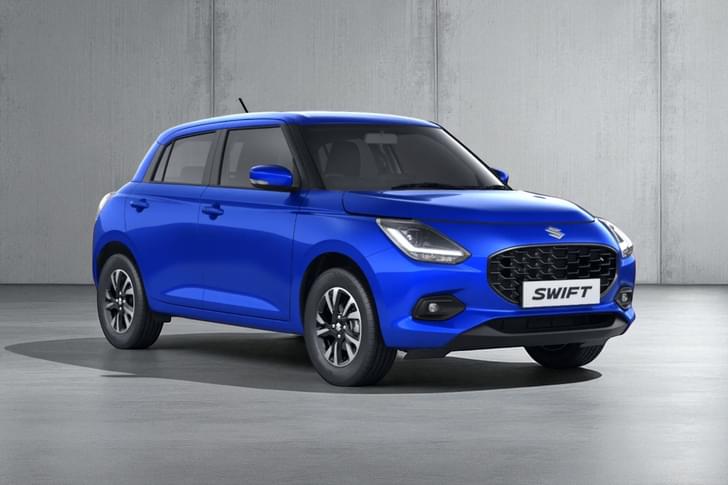Simple question, which is Maruti’s most significant car? The answer is a bit complicated. Some are of the opinion that it’s the 800, for the success it has been, while others pick the Alto. Ask Maruti insiders, however, and you get a very different answer. While the 800 may have topped sales charts for the longest time, and the Alto may be number one today, it is the gen one Swift that often tops the list. It was the car that changed Maruti after all, made it what it is today.
One look at the Swift was all you needed to understand it was a sea change from anything Maruti or Suzuki had done before. No cramped cabin that you needed to fold yourself into, no low-rent cookie-cutter plastics and it had a real sense of style about it. Even the stance was unique, especially with its cockpit-like glass house, those wide hips and the ‘square’ base; it was a just a massive step forward.
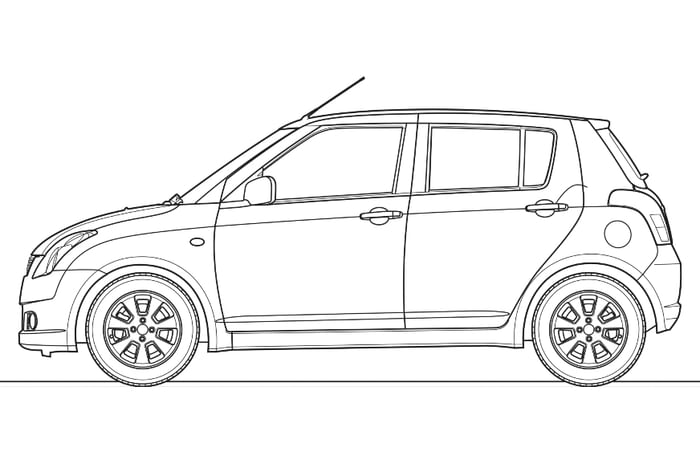
It was also the first car Maruti engineers and marketeers worked on together with their Japanese colleagues, all the way from conception to the completed car. It was the one that brought in new processes, new standards and new competencies. Maruti’s chief general manager (engineering) I.V. Rao explains, “it was a landmark car for us because our engineers were, for the first time, part of the global team that developed the car. We had around 20 engineers from India stationed in Japan for one and a half years, working as part of the global team. As a result, we learnt and incorporated a lot of new processes into our projects”. Timelines took on a lot more importance, processes like static and dynamic checks were introduced at every stage, and importantly, marketing was also involved to give their feedback at every stage.
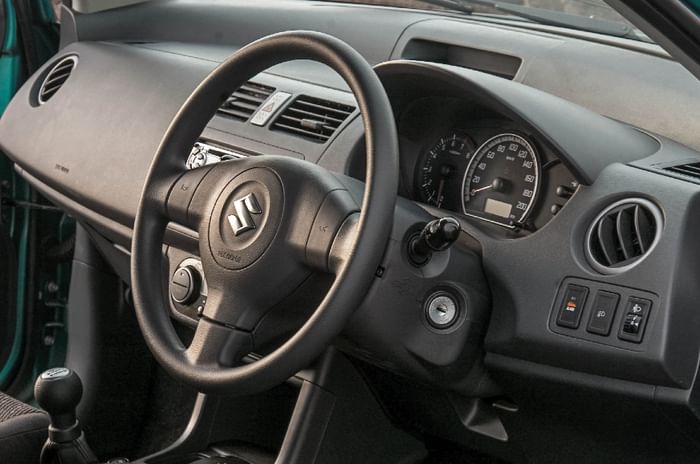
Strangely, and incredibly, for such an epochmaking car, the Swift almost didn’t happen, with the project often teetering on the brink. To understand why, it’s important to understand Maruti’s mindset at the time. Whereas today almost every car Maruti launches is a success, back in the day, with the Versa massively underperforming and loads of issues with the first-gen WagonR, Maruti wasn’t exactly sailing on an even keel. Far from it, there was a huge amount of stress and self-doubt in the system. Things became more difficult when the results of an early styling clinic came in. Done in India from early line drawings in 2003, post the reveal of the Concept S at the Geneva Motor Show, the Swift placed a distant fourth for desirability in a five-car line-up! This was not the result the company was expecting or looking for. How could Maruti commit to this car if Indian car buyers didn’t want it. “There was pandemonium and the view was that the Swift was clearly poorly suited for India,” explained Avik Chattopadhyay, the deputy general manager (marketing) at the time. The ambitious plan to simultaneously develop the Swift for Japan, Europe, India and China was clearly coming apart at the seams.
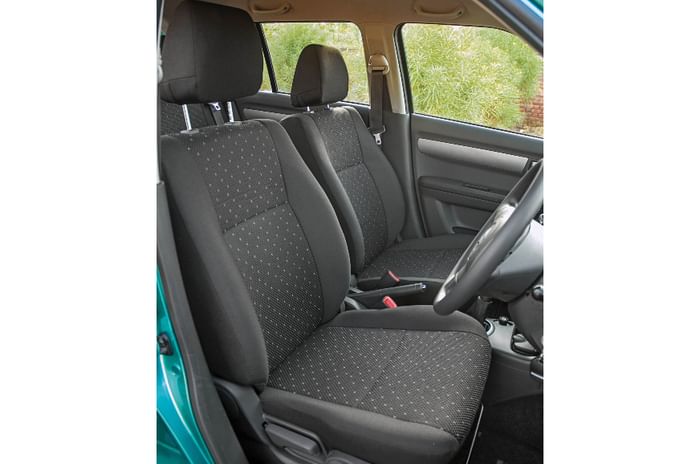
But why did Suzuki embark on such an adventurous project for India in the first place? “It was the success of the Honda City that spurred them on,” explains Chattopadhyay,” with cars like the Getz from Hyundai also playing a part.” But could Maruti take on Hyundai at their own game, and win? Not many on the inside believed it could. The Swift wasn’t as practical or as spacious in the back, the boot was tiny in comparison and then the window line converged towards the rear, which made it feel even more cramped. So, it wasn’t just the looks, it was also the fact that the Swift wasn’t very practical. This resulted in even more surveys and even more brow beating when similar results came in. If it hadn’t been for a consistent and strong push from director of marketing and sales, Kinji Saito, who played a long and consistent innings for the Swift, the project wouldn’t have moved forward as smoothly as it did. “Hats off to Saito”, says Chattopadhyay, “he tackled the opposition very effectively”.

So, while space and comfort in the front were truly super, Maruti worked on making the Swift more spacious and wider in the rear. It redid the cladding on the inside of the ‘C’ pillar, the rear bench was pushed back for additional legroom, reducing boot space further, and the profile of the seat itself was altered to make it more comfortable. It still remained a bit tight in the back, and visibility for rear seat passengers was poor, but the rear seat was improved.
The other area where the Swift was ‘re-engineered and improved to take on the Getz was fuel economy; but here Maruti would have the upper hand, Hyundai’s petrol engine at the time wasn’t very fuel efficient. “Sure Sure, this was a new type of Maruti, attractive, sexy, and sporty. . . but it had to embody Maruti’s core values as well, and that meant it had to deliver super fuel economy,” explains Chattopadhyay. As a result, Maruti’s G13, borrowed from the Esteem, was retuned to give better fuel economy. The gearing was made ‘taller’ to reduced engine RPM at any given road speed, and fuel delivery at small throttle openings was reduced to conserve fuel, allowing for a small but clear improvement. Initial throttle responses as a result were poor, but the Swift landed up with a figure of 14.4kpl in the city vs 10.4kpl for the Hyundai Getz, so job done.
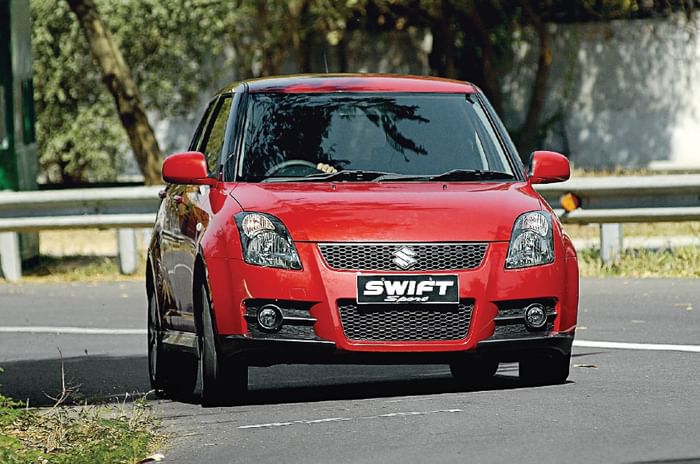
The Swift’s trump card, however, was the go-kart like handling. The suspension, apart from being raised slightly for our roads, was tuned to keep the global car’s sporty feel. The steering used an expensive power steering module for improved road feel and with a wheel at each end and stiff springs and dampers, the Swift in India also drove like a Mini. It did mean that there was more than a bit of stiffness in the suspension, and some customers did point this out – resulting in the subsequent K12 engine version being softened and losing its edge – but even today, that gen-one car feels special to drive.
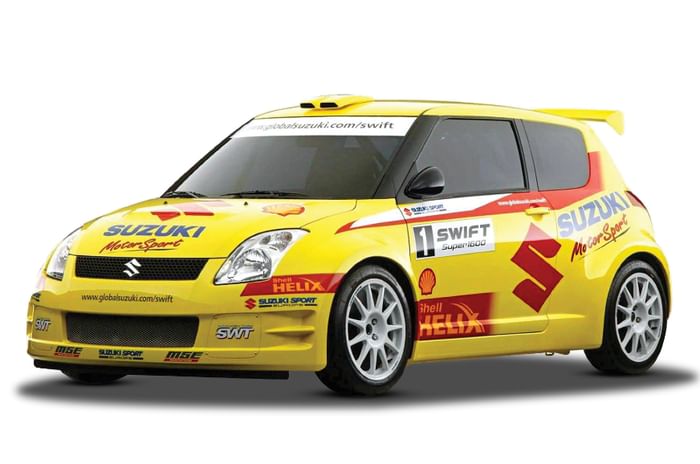
On May 25, 2005, Maruti launched the Swift in India. Interest in the car was huge and the attractive hatch created a considerable buzz. The marketing team had launched the car only in bright colours (with no white shade available initially), and with a starting price of Rs 3.87 lakh for the LXi, it was on target too. It was a bit of a stretch for many traditional hatchback buyers, and some adopted a wait and watch policy, especially with the VXi and ZXi costing Rs 4.05 lakh and Rs 4.85 lakh, respectively. The loaded ZXi was placed below the price of the 1.3 Honda City and this made buyers think. But as customers got to know the car better and identified it for what it was – a Suzuki built to global standards – sales started taking off. The ZXi was particularly well equipped. It had big alloys, wide for its time 185/70 R14 tyres and even came with ABS or anti-lock brakes on the top end, something the City didn’t get until much, much later in September 2007 (City ZX V-TEC, 10th anniversary edition).
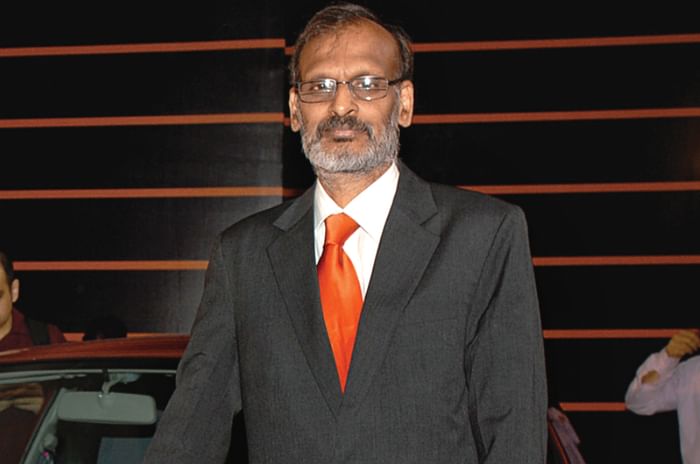
The Swift programme was also an extremely ambitious one. There was no automatic version planned – although the Zen came with a 3-speed automatic – but Maruti worked on the successful Fiat Multijet-engined diesel from day one. And there were many celebratory models planned as well. The Sport, which we drove in April 2006, was pencilled into the plan as an import, with a limited number of cars (around 300) for the initial batch. And later in the cycle, Suzuki and Maruti had even planned a convertible, which was also a limited import. The latter, however, was never built and the plan of importing the Sport was shelved. But Maruti later did seriously debate a locally assembled Swift Sport, with the M16 engine from the SX4 slated to go under the hood. The M16, though assembled here, was made from a high percent of imported parts, and that eventually proved to be one of the stumbling blocks. And for the Swift, Motorsport was another part of the plan that got nixed; this despite the Esteem benefitting from it hugely.
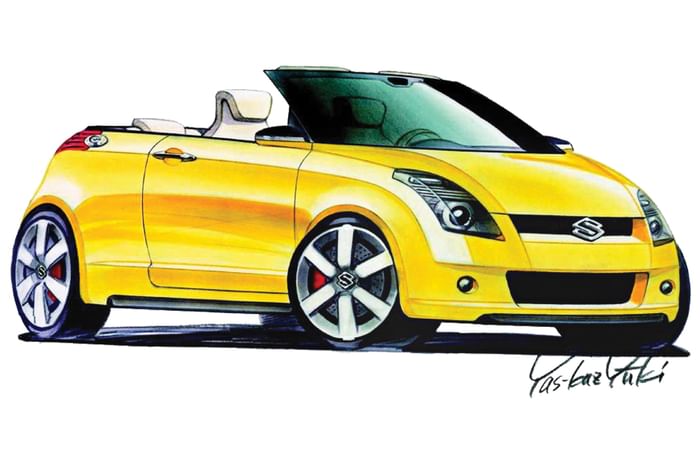
Today, 15 years down the road, the Swift is a brand in itself. Maruti has sold an impressive two million plus cars over three generations, many of them diesels, and it will invest heavily in its blockbuster sub-brand in the future as well. All the success can however be traced back to the gen-one car. It looked stunning, set new standards, drove like a go-kart, was super-reliable and was even efficient to boot. Don’t miss an opportunity to drive one, especially if you haven’t driven one before.
Q & A - Avik Chattopadhyay, Ex-Deputy General Manager (Marketing), Swift

The Swift today is a huge success but why was there uncertainty in the lead up to the launch?
Post Versa, things were difficult for Maruti. The Versa was to be the next big seller/category, and Maruti had committed hugely. But it didn’t turn out to be a big success, so there was a lot of stress in the system. The Versa was actually the next big reversal after the Maruti 1000, where 1,50,000 bookings were cancelled. So when it came to the Swift, most of the bosses were not convinced we should enter the large hatchback category, as Maruti was still struggling to take on the Santro with the WagonR. Many, in fact, didn’t want to take Hyundai on again.
Did the fact that Maruti’s IPO was coming help?
Maruti needed to be seen as open, transparent and more extrovert, so yes the Swift had a larger role to play than just a new product. It was the new face of a new Maruti, in a new millennium. And that helped us give the marketing team a lot of freedom and flexibility. We for example had planned to import a limited number of Swift Sports, a batch of a convertibles were planned for later (the car was eventually never made), and there was even a motorsport plan and an automatic version.
Was any other name considered for the Swift?
There’s an interesting story behind this. The naming process started early, and some of us though the name Zen would be ideal. The name plate was already a success in India and since the two cars were similar in character, the name Zen would be familiar and a good fit. A lot of the Japanese disagreed and said Swift was a great brand name in Japan. This resulted in a huge amount of discussion and debate. Finally, it was decided to have a show of hands. Just then Osamu Suzuki walked in, spoke in Japanese with his colleagues and then, like me voted for the name Zen. As it turned out we were the only two, so Swift it was. But I’m still not sure, was Osamu Suzuki just being nice or did he really prefer Zen.




